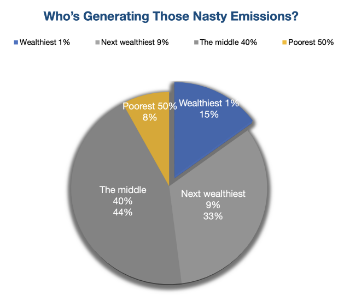Home > Archives > 5th Dec 2022 Edition > The Climate Chap: Climate crisis – the really BIG picture

MANGAWHAI'S NO.1 NEWSPAPER
|
|
|
The Climate Chap: Climate crisis – the really BIG picture5 Dec, 2022 OPINION I am regularly confronted by two challenges when it comes to doing nothing about our climate crisis: (1) Why should we bother when our emissions on a global basis are so small (a mere 0.17 percent), and (2) I’ve worked hard to enjoy my lifestyle, why should I change when others have created the problem? Two very good questions, and naturally I wish everyone in our amazing community a wonderful life. But please take a few minutes out to understand the ‘big’ picture. We are all directly contributing to this crisis. By 2050 New Zealand, and indeed every country, is obligated to be carbon neutral, therefore no longer letting any more of those nasty emissions escape into the atmosphere. We will no doubt still be using some fossil fuels and cows will still be burping, but these remaining greenhouse gases (GHG) will be offset by all our lovely trees gobbling up the harmful emissions. But the world continues to rapidly evolve in three stunning ways. By 2050 it will be very different from now and incredibly different to the world that we were all born into. This will make the climate crisis challenge even more demanding:
1. There’s a population explosion! In 1950 the world’s population was 2.5 billion, now it’s 7.7 billion, and by 2050 expected to be 9.7 billion. These are huge numbers. New Zealand will certainly exceed 6 million by 2050.
2. The world is rapidly becoming more affluent, and poverty is rapidly decreasing. Yes, there are parts of the world where poverty is still rampant, but overall people are advancing to a “western lifestyle”. In 1950, 60 percent lived in abject poverty, now it’s under 20 percent, and with a 300 percent increase in the world’s population. Sadly, the wealth gap between the affluent and poor is huge and getting larger. In my childhood being a millionaire was the ultimate recognition of wealth, now you need to be a billionaire, and $1 million gets you a small house on the North Shore.
3. The world has very recently become “urbanised” with more and more folks living in cities and with a vast exodus from rural areas. Globally in 1950, 30 percent lived in urban areas, now it’s up to 55 percent, and by 2050 70 percent. New Zealand has always been an urban nation with 72 percent living an urban lifestyle in 1950, and now 86 percent.
Combine these three major trends and what do you get? More and more people living in more and more cities and towns, and with a rapidly improving level of financial wellbeing. This is exactly what has been happening since the Industrial Revolution started 250 years ago, and when we all started contributing to the current climate crisis. Therefore we will need vastly more transport, homes, energy and food than ever before, and all with the potential of generating even more harmful emissions, not less. This is why we must start now in limiting climate change and adversely damaging our planet forever. I’ve claimed that this climate crisis is based on our lifestyle, so let’s look at the crisis from a different perspective. Who exactly is contributing what, based on wealth.
Who is generating those nasty emissions?
The next 40 percent of ‘middle income earners’ are responsible for another 44 percent of emissions. Therefore the wealthiest 50 percent of the world population generates 92 percent. The poorest 50 percent contribute only 8 percent. If you are reading this article you are not in the poorest 50 percent. They are not the problem, but with increasing scope to escape the poverty trap that will seek a western lifestyle, and crazily more people are now impacted by obesity than malnutrition. So we all need to reduce our nasty emissions, and quickly, to meet our 2030 and 2050 obligations. In these articles let’s look at sensible, practical and available ways for you to reduce the amount of emissions that you generate. Many ways are easy to adopt, and many will save you money. Ready for a change? |



